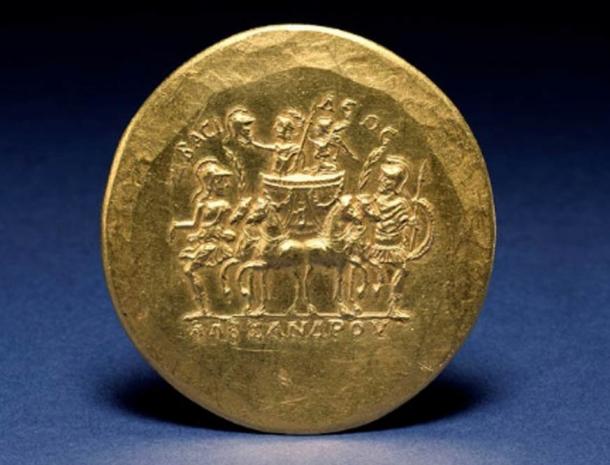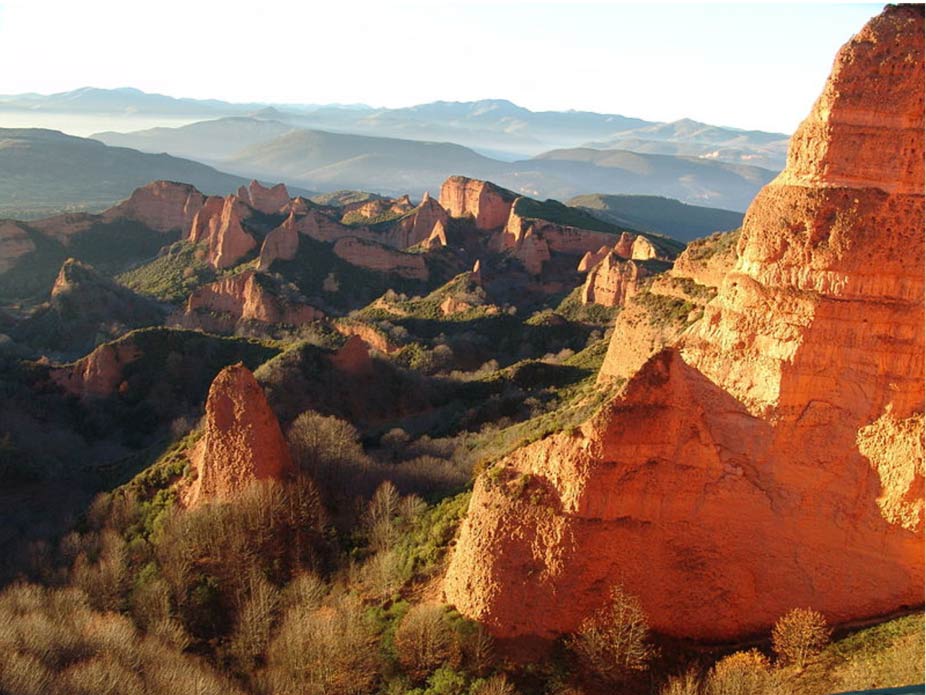Researchers discover vast ancient gold mines in Spain, the largest of the Roman Empire
Complex hydraulic systems and the methods of ancient Roman gold mining have been discovered using sophisticated laser detection and aerial mapping over Las Médulas in northwestern Spain.
Archaeologists have long thought that the Romans were mining for gold in Spain in the first century B.C., and researchers from the University of Salamanca have now located the vast ancient gold mines in the province of León, and hidden under Eria Valley vegetation and crops. The gold mine complex, known as Las Médulas, is believed to be the largest gold pit of the Roman empire. It featured channels and reservoirs, as well as intricate hydraulic systems which diverted high-pressure water to the site for processing.
Miners would carve aqueducts into the rock, and the flow of water would fill excavated cavities, causing pressure streams strong enough to pierce and break up thick rock walls. Water was also used to wash gold deposits.

Channels and reservoirs were used in ancient Roman gold mining in the Eria river valley. LiDAR data (left) reveals structures which are then compared with aerial photos (right). Credit: J. Fernández Lozano et al
Co-author and geologist Javier Fernández Lozano wrote in a report of this study published in the Journal of Archaeological Science, "The volume of earth exploited is much greater than previously thought and the works performed are impressive, having achieved actual river captures, which makes this valley extremely important in the context of Roman mining in the north-east of the Iberian Peninsula," reports ScienceDaily.

A rock-cut aqueduct in León, Spain. Wikimedia CC
PastHorizons explains the LiDAR (Light Detection and Ranging) technology, when mounted on planes or drones, “comprises a laser sensor which scans the ground […] with geographical references provided by GPS ground stations. The data obtained is represented by point clouds, which are processed with a piece of software to construct a cartographic model where the forms are identified, such as old reservoirs or channels.” LiDAR was developed in the 1960’s to analyze oceans and ice in the Arctic, but has been employed since in topography, geology and mapping. Using it for the Roman mining discovery is a first in ‘geo-archaeology’.
Egyptians were using such mining techniques long before the Romans. MiningWeekly writes that gold was highly prized by the ancients. It was seen as the flesh of Ra, the sun god, and a symbol of eternal life. In early Egypt, only kings and priests were permitted to wear it. Never tarnishing, gold was used in art on statues and temples.
Later, Roman gold had many uses, from jewelry and art, to coins. The elaborately designed coins had widespread use throughout the western world, and symbolize Roman wealth and power to this day.

Roman golden coin featuring Alexander the Great. Wikimedia
Roman military commander and author Pliny the Elder oversaw mining in Hispania, and recorded that systems (known as ruina montium, or the wrecking of mountains) were mimicked from those long employed in North Africa. In his Naturalis Historia, Pliny the Elder wrote of the Roman mining techniques:
What happens is far beyond the work of giants. The mountains are bored with corridors and galleries made by lamplight with a duration that is used to measure the shifts. For months, the miners cannot see the sunlight and many of them die inside the tunnels. This type of mine has been given the name of ruina montium. The cracks made in the entrails of the stone are so dangerous that it would be easier to find purpurine or pearls at the bottom of the sea than make scars in the rock. How dangerous we have made the Earth!
Featured image: View of Las Médulas, World Heritage Site, with hills filled with gold. Credit: Fernández, CC BY-SA 3.0
By Liz Leafloor



















Comments
A couple of local Living History Groups have joined forces to organize "The New Spain Project" in and near the Las Vegas and Southern Nevada area. Accepted history tells us that the Spanish weren't even here until about 1829, when the name "Las Vegas" was given to this area.
With all the vast riches and evidence of mining far earlier than 1829, we believe it may be probable that the historical clock needs to be turned back about 300 years to the Coronado time frame and the "Search for Cibola".
Any suggestions, interest and help you can steer us toward would be appreciated. One of our first tasks under development is putting a company of Spanish Armored Infantry on the Old Spanish Trail to get a feel of what it was like to travel with Coronado or Diaz or others in this time. https://www.facebook.com/photo.php?fbid=10205975889940721&set=a.1020...
Thanks for the great articles.
the History channel had a segment about these Mines. apparently, the Romans flooded the mine with water from a resevoir above the mine to extract the gold. Unfortunately, a lot of Miners were still inside the mine and thus drowned. Dont know how they fiqured this out after all these years so may not be a true story.
Thanks Joe! Yes, the real life nitty-gritty of empires sometimes gives a better glimpse into history than large-scale battles and wars. Resource acquisition/management is often how empires become powerful in the first place, and how they eventually lose power as well. Thanks for the nice comment.
I love the history of mining, whether it is the gold rush or ancient mining. Thank you very much for the information. Honestly, I had never thought about the gold needed to be mined by the Roman Empire. I don't know why, I mean it makes sense! Nice article, thank you again.
Long before mountain top removal in the Appalachians, there was the ruina montium.
Peace and Love,
Ricky.